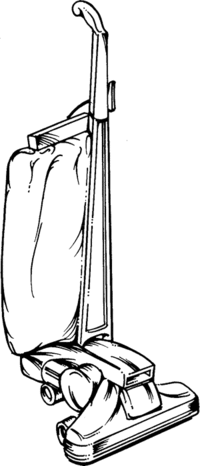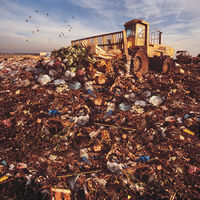Broken Vacuum Cleaner
A broken vacuum cleaner is just like an ordinary vacuum cleaner in most ways. It does, however, have one major defect: it doesn't work any more. This article sheds a little light on the differences and similarities between functional and broken (or dysfunctional) vacuum cleaners.
Note that we will probably not be covering all possible ways a vacuum cleaner can be dysfunctional, because vacuum cleaners are very complicated machines with many different bits and pieces. Most of the article will, therefore, concentrate on the most obvious ways a vacuum cleaner can be broken. You might have run into these defects yourself if you have been dealing with vacuum cleaners a lot, but it is probably still worth your while to read the article through.
Please keep in mind that there are several different brands and models. You might have run across a vacuum cleaner brand we have never heard of. You might even have seen one of them broken in ways we cannot imagine with the material in our possession. Because of this some caution is advised on our part as well as the readers': none of us should take it for granted that this article contains absolutely everything that can be said about vacuum cleaners, be they functional or dysfunctional (or broken).
The function of a vacuum cleaner[edit | edit source]
The following is an outline of the intended function of an ordinary household vacuum cleaner for those who have never seen or used one, but who can nevertheless see and/or use their computers to read this article.
An ordinary household vacuum cleaner is an electronic cleaning appliance. When on, it creates diminished air pressure inside its bowels. Thereupon dust particles, small trash and diamond rings are sucked into the appliance through an intake channel. When the running appliance is moved around inside a living space, the said living space will become less dusty. As a consequence it will be more livable to the median human being.
Ways in which a vacuum cleaner can be broken[edit | edit source]
- Smashed to smithereens. This is a very unusual way for a vacuum cleaner to be broken, but it can occur in explosions, violent automotive accidents, landslides, gun fights between rival gangs fighting for house-cleaning rights in a certain area, etc. In this case a vacuum cleaner has been blown to such small pieces that there is no reliable way to make certain if the appliance has actually been a vacuum cleaner or something else. In this case, there is no imaginable way to make the appliance run again.
- Burned to a cinder. A vacuum cleaner can burn to a cinder in a catastrophic fire, in a landfill furnace (mostly in disuse nowadays) or inside a volcano (for instance after having been dropped from an airplane or catapulted inside). Also in this case it is virtually impossible to even try to figure out a remedy. The vacuum cleaner is gone.
- Flattened out over several square meters. Since vacuum cleaners are mostly made of hard plastics and several different metals, it is necessary to heat one up to several hundred degrees Celsius to spread it out over an area instead of merely breaking it to bits using pressure. Therefore the chances of finding a vacuum cleaner broken in this manner are almost nil. Note that in some rare cases a fire eater and an elephant will work in concert to affect this phenomenon in a circus show.
- Got too bloody stoned. Clearly a vacuum cleaner cannot get stoned in the way that you and I can, but if you've been hotboxing your cleaning closet with your groovy friends, you've got no one to blame but yourself for your appliance's state of utter disrepair. Smoke is very bad for mechanical and electronic devices. You should not be surprised by this, as it's written right on the warning label. Of the pot, not the vacuum cleaner.
- Fails to suck; no visual or functional damage to be found. There can be a power shortage in your area. You may have forgotten to connect the power cord to a wall socket, or failed to switch the appliance on. See previous point for probable reasons. The vacuum cleaner is not broken.
Notes[edit | edit source]
- It can be argued that the listed ways in which a vacuum cleaner can be broken are not the most obvious, the way the initial chapter claims. This is really a matter of interpretation and viewpoint. In our view, for instance, a vacuum cleaner of which only a cinder is left is very obviously broken. It must be admitted that it is not very obviously a vacuum cleaner - unless you have seen it in its previous healthy state. We claim obviousness based on this clause.
- If you find yourself in possession of a vacuum cleaner in any of the previously listed states of disrepair, or otherwise damaged, it is strongly discouraged to attempt fixing it on your own. Not only are you an unqualified and idiotic consumer, but there are significant dangers associated with broken vacuum cleaners, the most potent of which is a tendency for them to suffer a recoil effect when being tampered with, flying back into function at full force, typically sending up to 3000 volts of raw electrical energy through their operator. It is at that point the vacuum becomes fixed, and the operator becomes broken.
- Some eccentric manufacturers make it their practice to create and market vacuum cleaners as broken from the start. This can cause considerable confusion in the end user, and in fact a broken vacuum cleaner that was manufactured as such is not considered to be broken, but rather a splendid specimen of machinery. Always be certain when purchasing a vacuum cleaner that it is not already intentionally broken so as not to put yourself and various tech support employees through a great deal of stresses.

